Pneumococcal Hemolytic Uremic Syndrome Increased Among Children Over Last 15 Years
Researchers explored the incidence of pneumococcal hemolytic uremic syndrome in children living in Sweden from January 2009 to December 2024.
Following a switch in Sweden’s National Immunization Program (NIP), children in the country reported an increase in pneumococcal hemolytic uremic syndrome (pHUS) from 2009 through 2024. Sweden’s move from the 13-valent pneumococcal conjugate vaccine (PCV13) to PCV10 in 2019 is most likely responsible for the uptick in pHUS cases because of changes in serotype coverage.
“Hemolytic uremic syndrome (HUS) is a rare but severe condition presenting with nonimmune microangiopathic hemolytic anemia, thrombocytopenia, and acute kidney injury,” wrote authors of a study published in JAMA Network Open.1 “Most cases occur in young children, peaking between 6 months and 4 years of age.”
Among all patients that experience HUS, an even smaller subset of the population is diagnosed with pHUS caused by Streptococcus pneumoniae (S. pneumoniae). While 90% of pediatric HUS cases are caused by Shiga toxin producing E. coli, the remaining 10% is almost entirely caused by S. pneumoniae.2 Furthermore, children with pHUS reported underlying pneumonia in 65%-92% of cases, highlighting the heightened need for vaccines protecting against pneumococcal diseases in both Sweden and all around the world.
READ MORE:
“The introduction of PCVs has contributed to decrease the incidence of pHUS, especially after introduction of PCV13, which covers serotype 19A, the most common serotype in pHUS,” they continued.1 “In Sweden, PCV13 was introduced in the NIP in 2010 but replaced by PCV10 in 2019.”
For a greater part of this century, pHUS cases among children have been very rare. Throughout dynamic recommendations for which pneumococcal vaccines are safest and most effective, however, these cases have been on the rise in Sweden’s recent history. The need for further understanding of pediatric pHUS came when cases quadrupled from 2009 to 2023 among Swedish children under 5.
In the US, recommendations are slightly different, with PCV13 being the safest and most effective pneumococcal vaccine for both children and adults. There are also pneumococcal polysaccharide vaccines (PPSVs) available as well as approved formulas for PCV15, 20, and 21, but researchers agree vaccines with valencies over 13 still require further research.3
Sweden, however, has a different set of suggestions for children looking to avoid any possibility of pHUS. With previous data up to around 2023 for Swedish children with pHUS, researchers wanted to get a firmer grasp on the relationship between pHUS incidence and vaccine recommendation updates.1
Researchers conducted a cohort study by gathering all pediatric pHUS cases in Sweden from January 2009 to December 2024 that focused on both vaccine coverage and pneumococcal serotype. Throughout the study’s time period, researchers identified 25 total cases of pHUS in Swedish children (median age, 19 months; 52% girls).
Similar to the previously reported pHUS increase in Sweden back in 2023, researchers of the current study discovered another significant increase among this population. Of the 25 cases reported in the study, 68% occurred between 2022 and 2024. “The incidence among children aged 0 to 5 years was 0.11 cases per 100,000 children per year from 2009 to 2021, compared with 1.09 cases per 100,000 children per year in 2022 to 2024,” wrote the authors.1
After presenting findings on the increase of pHUS cases, they identified 3 children who were not immunized and a remaining 17 participants who received PCV10; the remaining 5 participants did not present immunization data. Finally, for serotype distribution detected in each participant, serotype 3 was identified 10 times and serotype 19A was identified 5 times.
“We report an increase in pHUS incidence in Swedish children with serotype 3 as the main pathogen,” continued the authors.1 “While serotype 3 may cause illness despite immunization, the rise occurred after the switch in the NIP from PCV13, covering serotype 3, to PCV10, in which serotype 3 and 19A are uncovered. In comparison, a national surveillance in England showed a decrease in pHUS incidence after replacing PCV7 with PCV13.”
Based on study results, and in comparison with other countries, Sweden’s move from recommending PCV13 to PCV10 correlated with an increase in pHUS cases. While only a modest increase among less than 100 Swedish children, evidence from this study may inform other countries and their NIPs. As more PCVs are developed and immunization guidelines are updated, researchers and government officials will certainly keep an eye on the impact vaccines have on pneumococcal disease risk.
“We conclude that the pHUS incidence has recently increased in Sweden, with serotype 3 identified in most cases,” they concluded.1 “A recent switch to PCV15 in the NIP in 2024 may halt the observed increase, but given the risks for serotype shift, continued surveillance of pHUS and [invasive pneumococcal disease] remains essential.”
READ MORE:
Are you ready to elevate your pharmacy practice? Sign up today for our
References
1. Hildenwall H, Georgieva V, Luthander J, et al. Pneumococcal hemolytic uremic syndrome in children in Sweden. JAMA Netw Open. 2025;8(4):e255721. doi:10.1001/jamanetworkopen.2025.5721
2. Young HL, Brown CC, Crawford B, et al. Streptococcus pneumoniae associated hemolytic uremic syndrome in children. Front Pediatr. 2023;11. https://doi.org/10.3389/fped.2023.1268971
3. Nowosielski B. Pneumococcus remains significant cause of adult mortality, morbidity. June 17, 2025. Accessed June 18, 2025. https://www.drugtopics.com/view/pneumococcus-remains-significant-cause-of-adult-mortality-morbidity
Newsletter
Pharmacy practice is always changing. Stay ahead of the curve with the Drug Topics newsletter and get the latest drug information, industry trends, and patient care tips.






































































































































